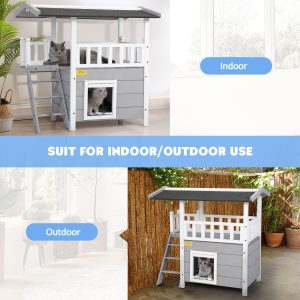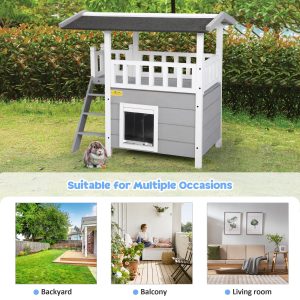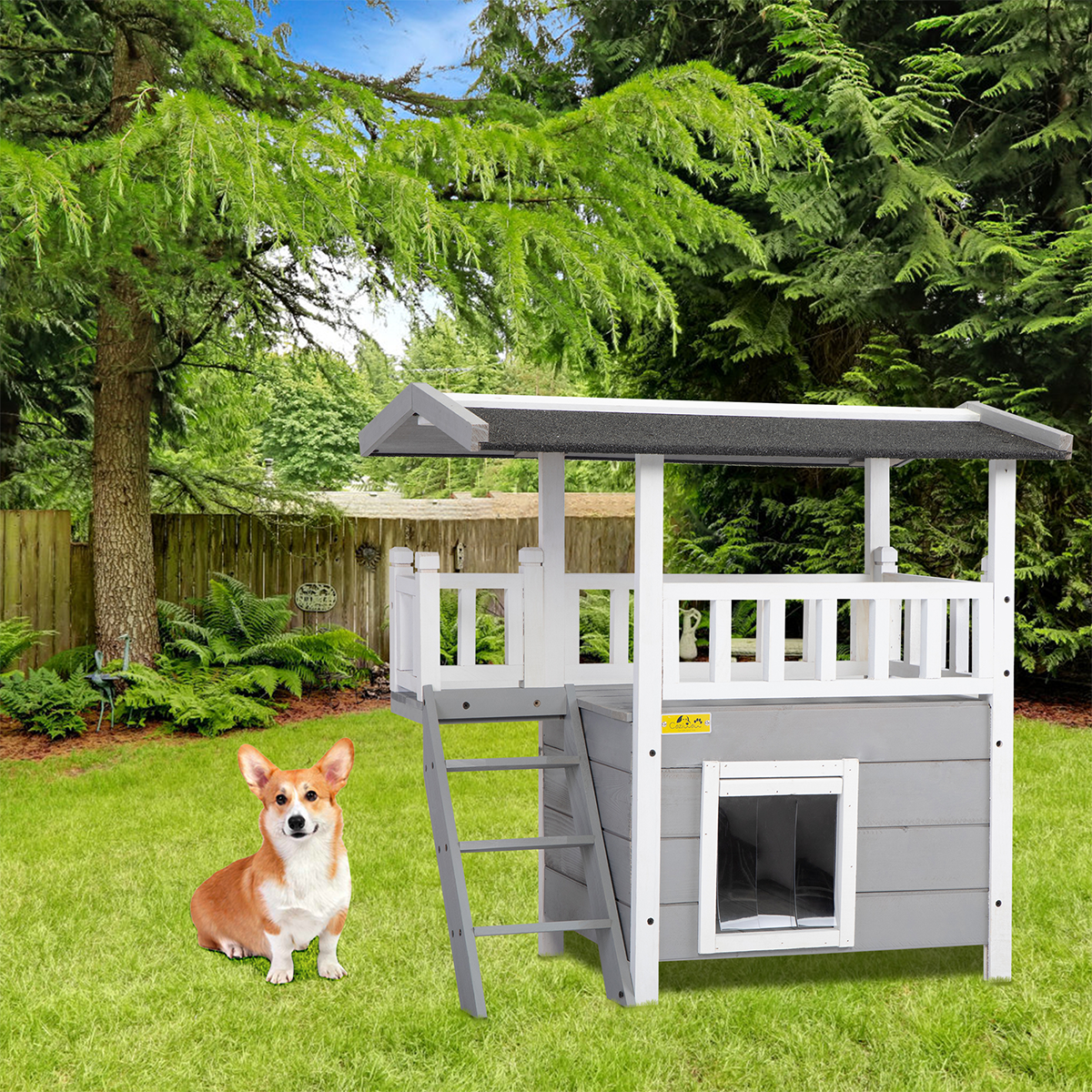While images of sad doggies living outside and away from their families may come to mind, the truth is that, when used properly, modern dog houses serve a completely different purpose.
Outdoor dog houses are useful if your home has a yard because they can protect your dog from the elements while he is temporarily outside—and before he comes back in to relax on your couch for the night.
According to Diane Orenchuk, owner of Beyond the Walk Doggie Daycare and Boarding and a certified professional dog trainer and behaviorist, an outside dog house can also be a safe haven for a fearful dog who wants to take some time to decompress or feel safe while outside.
“However, I would suggest also doing training sessions with your fearful dog outside, staying out with him, using positive reinforcement, and taking safety precautions to ensure if he becomes spooked he cannot run away, jump a fence, or slip out of his collar,” Orenchuk says. In short, your outdoor dog house should not be used to replace training, interaction, or other activities that can help solve underlying issues; it should simply be a safe place to hide when the world becomes too much.
Summer Benefits of Outdoor Dog Houses
While air-conditioned dog houses can be useful for resting between fetch games on hot summer days to help prevent heatstroke in dogs, Dr. Mark Williamson, DVM at Dunedin Animal Medical Center (DAMC) in Florida, advises that if the conditions outside are too severe for you to be comfortable, you should not leave your pet outside during these times, either.
According to Dr. Williamson, who has a background in emergency and critical care veterinary medicine, a dog house should serve the purpose of providing a safe and comfortable place for your dog to rest when temporarily outdoors. “It’s critical for a dog to be able to avoid constant direct sunlight in the heat of summer,” Dr. Williamson adds.
A nice, cool dog house can also help you keep your garden in good condition. “During the hotter months of the summer, a dog will seek a cool place to lay down—if there aren’t many shaded areas in the yard, you may find your dog digging holes to try to lay down on cooler ground,” Dr. Williamson says. In the event of an unexpected thunderstorm, your dog will appreciate having a place to hide.

Winter Benefits of Outside Dog Houses
A dog house can help prevent hypothermia in dogs and provide shelter from rain, snow, wind, and extreme temperatures in the winter, according to Orenchuk, who adds that these structures are not intended to be permanent shelters. “I would recommend monitoring your dog’s outdoor time and allowing them to return indoors [in bad weather],” Orenchuk adds.
According to Williamson, having a warm place to cuddle up in during the brisk winter days can also provide the comfort any dog deserves when he is out exercising in the yard. A dog house can act as a safety net in times when changing weather conditions catch you off guard.
However, insulated dog houses can become a magnet for wildlife, so keep that in mind. “If the dog house is meant to provide warmth and protection during the bitter cold days and nights of winter,” Dr. Williamson says, “you may find that it attracts a variety of wildlife desperately seeking adequate shelter to stay alive.” “Some of these animals carry serious diseases, and your pet may sustain serious injuries while attempting to fend off these critters, which may include skunks, raccoons, opossums, or even coyotes.”

Picking the Right Dog House
Different materials have advantages and disadvantages, so deciding what is best for your dog can be difficult. Dr. Williamson believes that dog houses made of composite plastic material, similar to what is used on most outdoor decks, are superior to those made of wood because they are less likely to be chewed up. “They’re also much easier to clean and disinfect, and they’re less likely to attract insects,” Dr. Williamson says.
Wood, on the other hand, is typically warmer and a better choice for winter, but Orenchuk points out that, unless sealed, wooden dog houses are difficult to sanitize due to their porous surface. “Routinely sanitizing a dog house is a painstaking task: all interior walls would need to be sprayed with water, all organic matter (grass, dirt, feces) completely removed, and every surface, nook and cranny then scrubbed with a brush or towel, fully rinsed and completely dried,” says Orenchuk.
If you want to get this chore done as soon as possible, a wooden dog house like the 2-Tier Wood Pet Dog House With A Roofed View Deck might be a better option.


